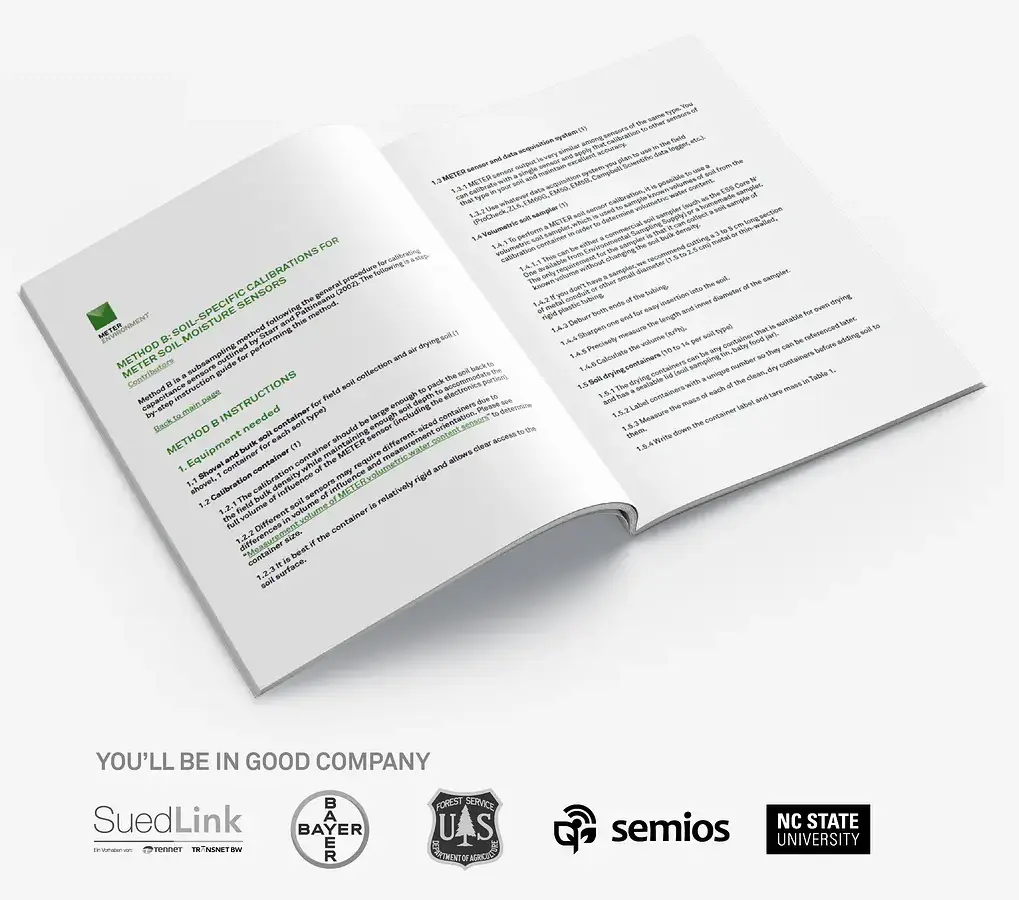How to install soil moisture sensors—Faster, better, and for higher accuracy
If you want accurate data, correct sensor installation should be your top priority. Poor installation can potentially cause accuracy loss of greater than 10%.
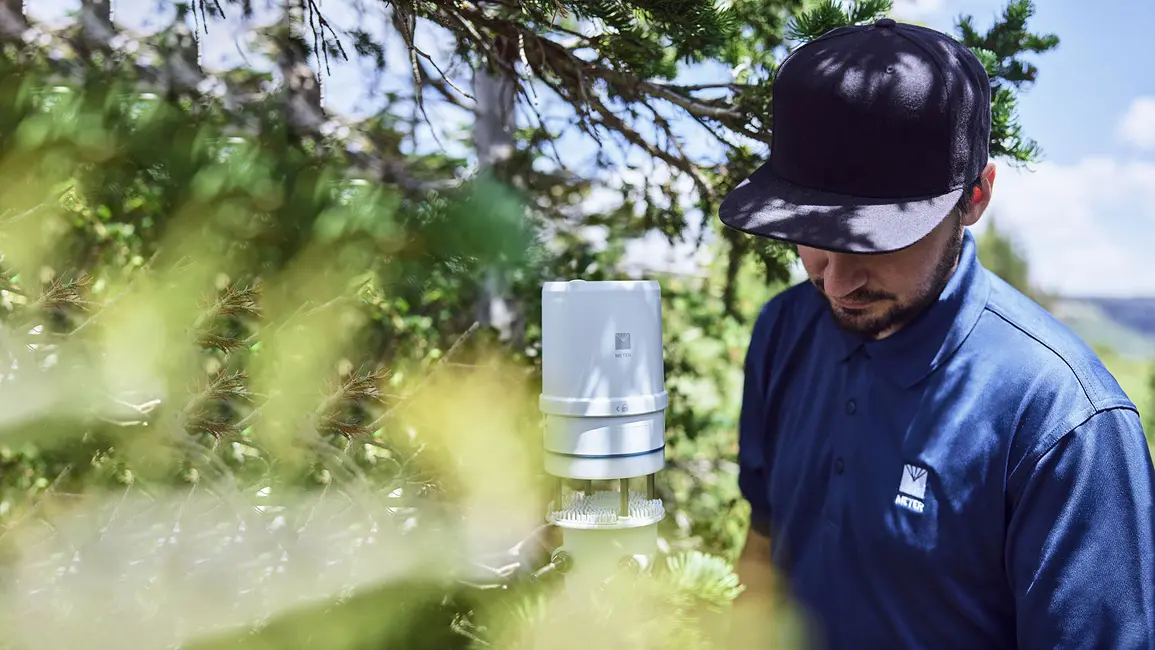
The end of harvest often marks the start of winter for many outdoor growers. Proper maintenance of sensors and devices helps ensure everything is working like it should and can help you avoid a system failure or costly repairs in spring.
Here are some tips to stay on top of routine maintenance tasks this winter to prevent damage from harsh conditions.
Check the connection and integrity of all cables. Factors such as rodent damage, heavy machinery or human error can lead to severed cables or poor wiring connections.
Ensure the cable plug is properly seated in the logger port. Using ZENTRA Utility on your mobile device, scan the logger for the sensor to ensure the logger is retrieving data. Over time, sensor contact may become blocked due to the presence of dust and debris in the logger port. Gently remove and clean the port using a can of compressed air to dislodge any foreign material and swab with isopropyl alcohol if dirty.
While METER loggers require minimal maintenance, winter may be a good time to replace your batteries, cable zip ties, and case gaskets.
When replacing your logger batteries, be sure to replace all six ZL6 logger batteries and/or all five EM50/60G logger batteries with fresh rechargeable nickel metal hydrides (NiMH) of the same brand or alkaline batteries of the same brand if the logger is located in an area where solar energy harvesting is minimal. Do not mix NiMH and alkaline batteries together.
The average life expectancy in connected data loggers is 3 to 12 months for alkaline batteries and 3+ years for NiMH batteries with an unobstructed view of the sun, depending on logger configuration. Cold temperatures can reduce battery capacity and affect its charge and discharge rates. You can check your battery life of your logger at any time in ZENTRA Cloud.
NOTE: Installing or replacing batteries in the ZL6 resets the internal real-time clock. The ZL6 time can be set from ZENTRA Utility, the on-board GPS receiver, and the cellular network. Press the TEST button in ZENTRA Utility after changing the batteries to enable the GPS receiver to acquire a new time and position. Refer to logger manual for full instructions.
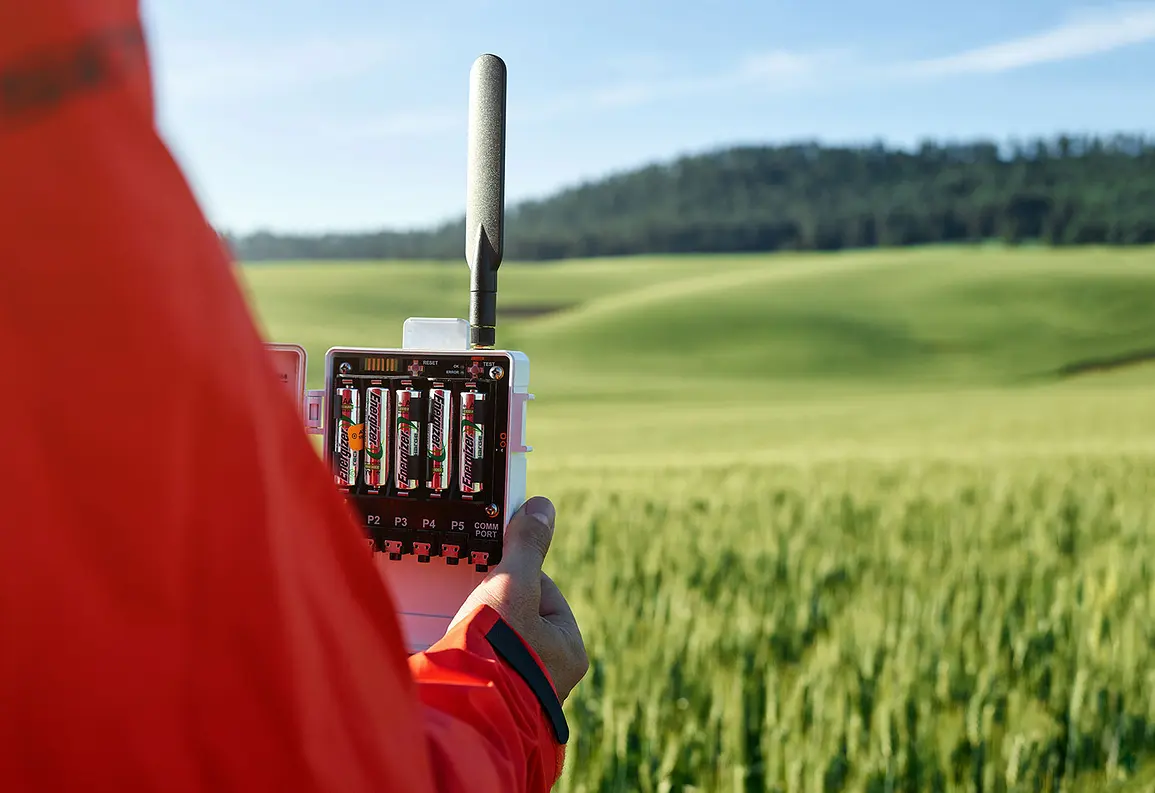
Check the battery holders to make sure they are clean and free of corrosion. If corrosion has formed on the terminals, you can remove it using a cotton swab and vinegar or lemon juice. Severely corroded holders will need to be replaced.
Integrated solar charging panels in the ZL6 data logger and EM50/60G solar data loggers reduce power maintenance requirements and allow for extended deployments. Solar panels should be cleaned periodically for maximum efficiency. Regular inspection and cleaning of bird droppings, debris, and snow with non-abrasive cloth and water is advised.
UV exposure and other outdoor elements can cause gaskets and cable zip ties to degrade over time. Replacing logger cable zip ties to mounting poles annually and checking case gaskets helps keep devices secure and sealed.
The ATMOS 41 all-in-one weather station is designed for continuous monitoring of 12 environmental and installation quality parameters, including solar radiation, precipitation, air temperature, barometric pressure, vapor pressure, relative humidity, wind speed, wind direction, maximum wind gust, lightning strike counter, lightning distance, and tilt.
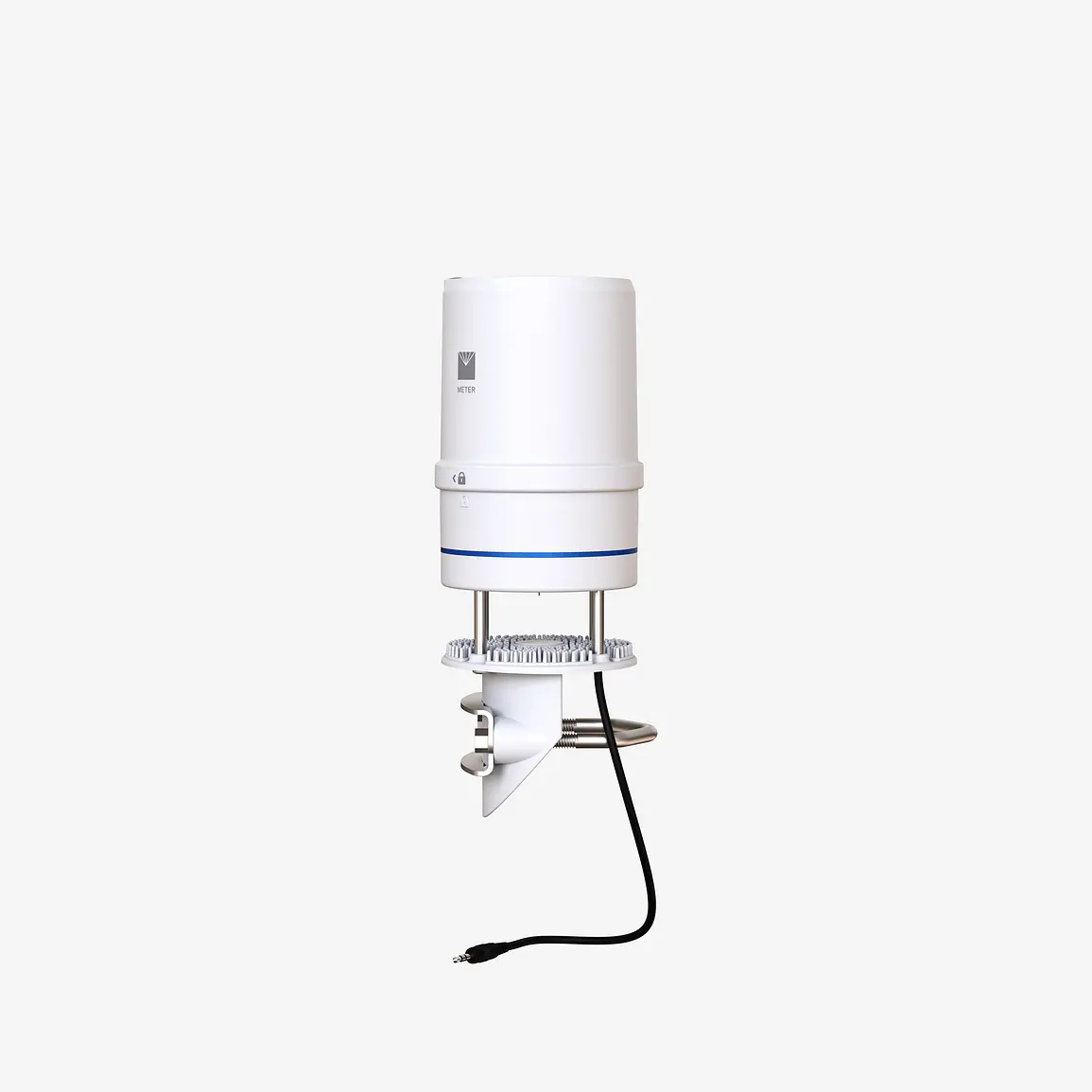
Bird droppings and other soiling of the domed sensor surface will cause serious errors in pyranometer readings and may affect rain gauge measurements. Check the sensor regularly to make sure it is clean and check data often to identify possible problems. Isopropyl (rubbing) alcohol and a Q-tip or cotton swab work well for cleaning the sensor area. Microfiber bags work well, too. Do not use an abrasive cloth on the sensor surface, as it will scratch.
See the full cleaning instructions for detailed procedure.
NOTE: Installing bird spikes to your ATMOS 41 is strongly recommended to prevent birds from sitting on the edge of the rain gauge and minimize buildup in the rain funnel. Pliers are required for installation.
The pyranometer is factory calibrated. The sensor-specific calibration value can be found on the interior of the rain funnel. METER recommends swapping and calibrating the ATMOS 41 pyranometer with new sensor modules at least once every two years.
When swapping the ATMOS 41 rain funnel and pyranometer, you’ll need to enter the new pyranometer calibration value (Cal Factor) into ZENTRA Utility for the EM60G/ZL6 data logger. See instructions for replacing the ATMOS 41 rain funnel and pyranometer and contact customer support for replacement parts.
ATMOS 41 barometric pressure and vapor pressure/RH sensors and their respective calibrations are housed on a module that sits behind the circular Teflon membrane in the same housing as the sonic transducers (see Figure 8 in manual).
This module should be removed and replaced in the field at least every two years or annually for some applications with a new calibrated sensor module. Please contact customer support for new sensor modules/replacement parts and consult the instructions for swapping ATMOS 41 daughterboard.
Keeping the ATMOS 41 all-in-one weather station level to the ground is critical for rain gauge, anemometer, and pyranometer accuracy. Check horizontal and vertical leveling using the bubble level, located underneath the ATMOS 41, and/or using X-Y data. The ATMOS must be within ±2 ° of dead level (0, 0) in both the X and Y directions to accurately measure rainfall and solar radiation. You can also use a PROCHECK display to level the weather station. See manual for recommendations and installation instructions.
The accuracy of wind direction measurements depends on the orientation of the ATMOS 41. Ensure the N engraved end is still pointing true North using a compass.
Over time, the accumulation of dust and bird droppings can cause the dry output to rise on the PHYTOS 31 Leaf Wetness Sensor. The sensor should be cleaned periodically using a cloth moistened with only water. The sensor should also be cleaned when elevated dry output is detected.
Adding UV protectant will extend the service life of the PHYTOS 31 and is highly recommended. The PHYTOS 31 leaf wetness sensor is designed to withstand typical outdoor radiation and precipitation loads for greater than two years. However, application of UV protectant is strongly recommended and is essential if using the PHYTOS 31 in areas with unusually high radiation loads.
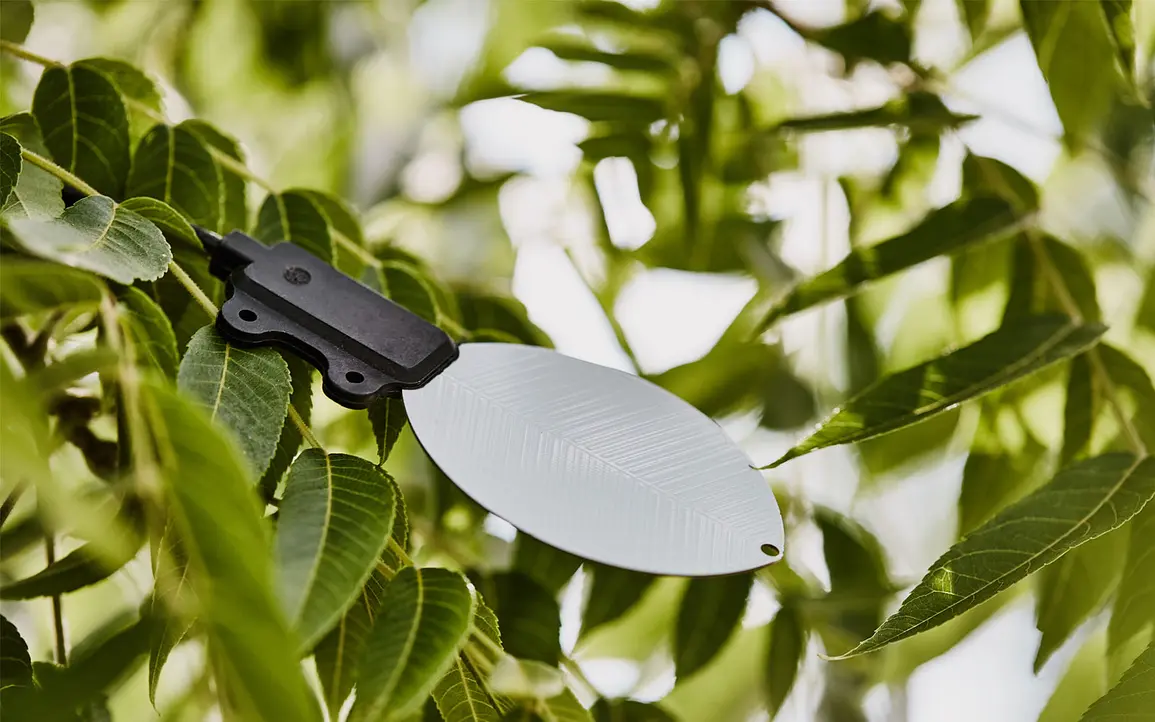
The PHYTOS 31 comes pretreated with UV protectant, but METER recommends reapplying McNett UV Tech every 45 days. McNett is the only tested and approved UV blocking system for the PHYTOS 31. To apply McNett UV Tech:
Snow accumulation and freezing temperatures can affect the performance of various sensors, including the following.
Tensiometers are filled with water, therefore susceptible to freezing. Remove from service any tensiometers that might be exposed to freezing temperatures. Refilling the sensor may not be possible under these conditions.
And remember, do not touch the ceramic cup. Skin oil, sweat, or soap residues will influence the ceramic hydrophilic performance.
While freezing is not generally a problem in deep underground well installations, it might be an issue in surface water wells and underground installations above the frost depth. If water freezes in the HYDROS 21 sensor pressure transducer cavity, then ice formation will ruin the pressure transducer. If the sensor is in water, it must not be allowed to experience temperatures below freezing, 0 °C or 32 °F. Exposing the HYDROS 21 sensor to freezing temperatures with water in the pressure transducer cavity voids the sensor warranty.
Because the PS-1 Irrigation Pressure Switch is plumbed into your irrigation line, possible freeze damage can occur. Please ensure water has been cleared and you take the proper precautions in winterizing your irrigation system.
The accumulation of snow, ice or frost may adversely affect the accuracy of the ATMOS 41’s solar radiation measurement and can dampen anemometer measurements. See app note for more information on ATMOS 41 performance in below-freezing and snowy conditions.
The EM60G/ZL6 will automatically receive firmware updates when connected to the internet. Firmware updates can be part of a regular maintenance schedule, but are generally not required unless you need support for a new sensor type. You should always be running the latest version of software when possible.
Keep software like ZENTRA Utility and ZENTRA Utility Mobile updated on your various devices (laptop, phone, etc). Sensor firmware updates are not part of a regular maintenance schedule and should not be done unless contacted by METER Group to do so.
Software Updates: Check for the newest available version of the ZENTRA Utility. If a newer version is available, a prompt will appear to install the update. The computer must be connected to the internet for this feature to work. ZENTRA Utility checks for newer versions of the program each time it launches. It will download these updates in the background automatically.
Logger Firmware Updates: Check for the newest version of EM60G/ZL6 firmware from METER. If a newer version is available, ZENTRA Utility downloads the firmware in the background.
When ZENTRA Utility connects to an EM60G/ZL6, it compares the firmware on the logger with the latest version available. If the EM60G/ZL6 firmware is out of date, ZENTRA Utility will prompt to start a firmware update for the logger. ZENTRA Utility maintains a cache of logger firmware to allow field firmware updates without a connection to the internet.
Click here for information about renewing your ZENTRA Cloud subscription.
Our scientists have decades of experience helping researchers and growers measure the soil-plant-atmosphere continuum.
If you want accurate data, correct sensor installation should be your top priority. Poor installation can potentially cause accuracy loss of greater than 10%.
Our application experts demonstrate how to correctly clean the ATMOS 41 all-in-one weather station.
Step-by-step instruction guide for performing METER soil moisture sensor calibrations
